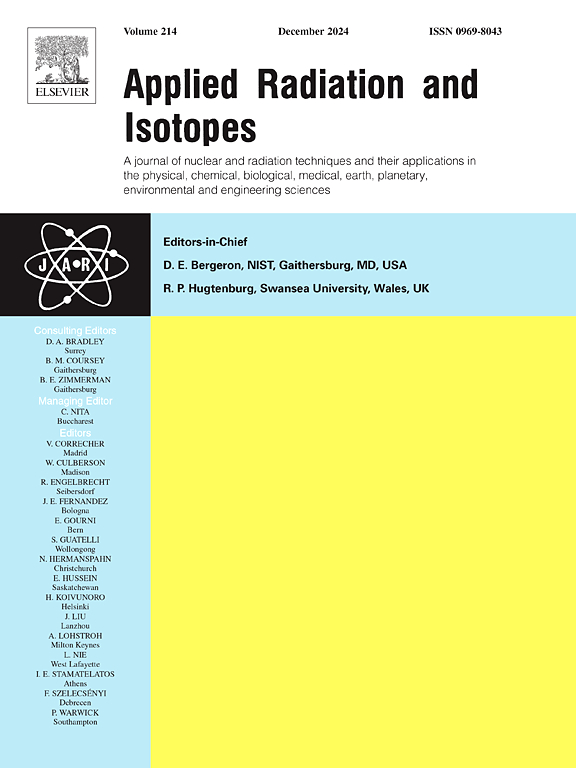Monte Carlo-based estimation of patient absorbed dose in 99mTc-DMSA, -MAG3, and -DTPA SPECT imaging using the University of Florida (UF) phantoms
IF 1.6
3区 工程技术
Q3 CHEMISTRY, INORGANIC & NUCLEAR
引用次数: 0
Abstract
It is generally accepted that children's organs are more sensitive to radiation than adults, due to their growth rate. Therefore, evaluating the absorbed dose in children to avoid irrecoverable damage is highly crucial. In this work, absorbed dose by different organs of children within the SPECT imaging for the 99mTc-MAG3, 99mTc-DTPA, and 99mTc-DMSA that are commonly employed for pediatric patients, were estimated through the use of Monte Carlo simulation and the University of Florida's (UF) voxel-wise phantoms at the ages of 4, 8, 11, and 14-years old. The results showed that the highest absorbed dose was by kidneys and when 99mTc-DMSA was used. Also, the highest and lowest absorbed dose in the organs occurred when 99mTc-DMSA and 99mTc-MAG3 were used, respectively. The simulation results were in good agreement with the ICRP 128 data.
求助全文
约1分钟内获得全文
求助全文
来源期刊

Applied Radiation and Isotopes
工程技术-核科学技术
CiteScore
3.00
自引率
12.50%
发文量
406
审稿时长
13.5 months
期刊介绍:
Applied Radiation and Isotopes provides a high quality medium for the publication of substantial, original and scientific and technological papers on the development and peaceful application of nuclear, radiation and radionuclide techniques in chemistry, physics, biochemistry, biology, medicine, security, engineering and in the earth, planetary and environmental sciences, all including dosimetry. Nuclear techniques are defined in the broadest sense and both experimental and theoretical papers are welcome. They include the development and use of α- and β-particles, X-rays and γ-rays, neutrons and other nuclear particles and radiations from all sources, including radionuclides, synchrotron sources, cyclotrons and reactors and from the natural environment.
The journal aims to publish papers with significance to an international audience, containing substantial novelty and scientific impact. The Editors reserve the rights to reject, with or without external review, papers that do not meet these criteria.
Papers dealing with radiation processing, i.e., where radiation is used to bring about a biological, chemical or physical change in a material, should be directed to our sister journal Radiation Physics and Chemistry.
 求助内容:
求助内容: 应助结果提醒方式:
应助结果提醒方式:


